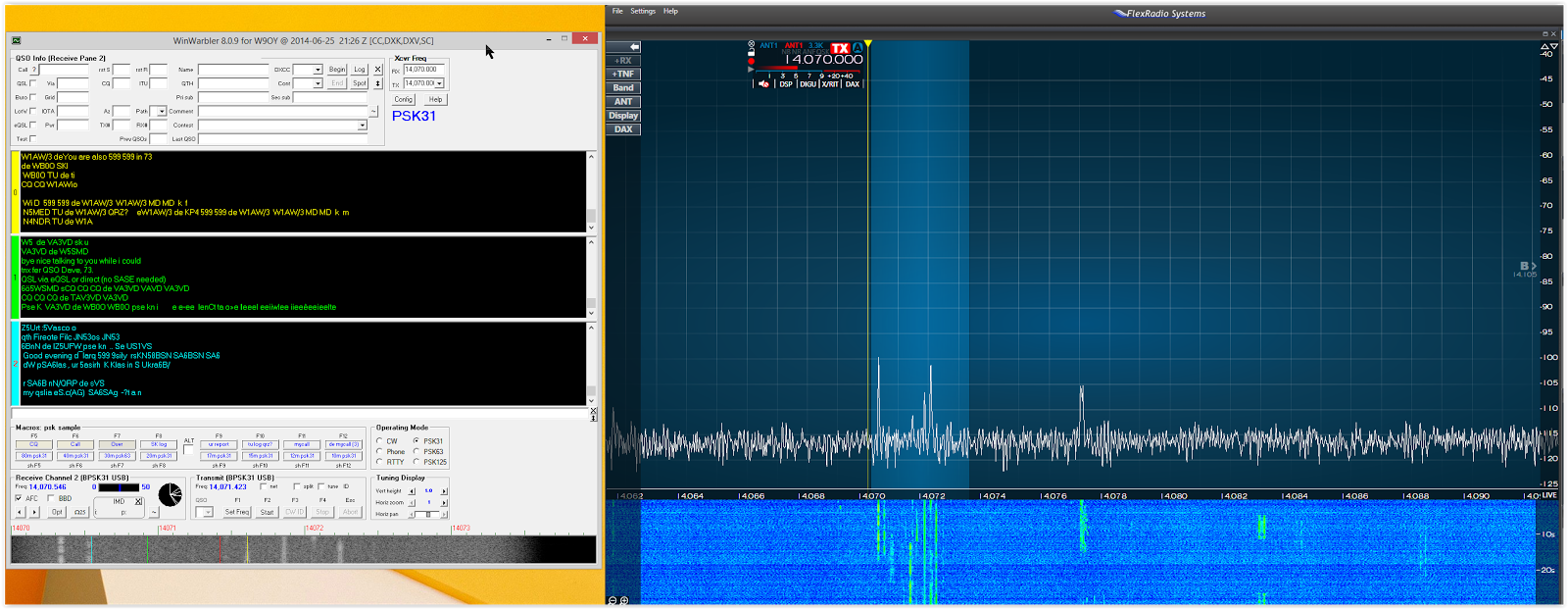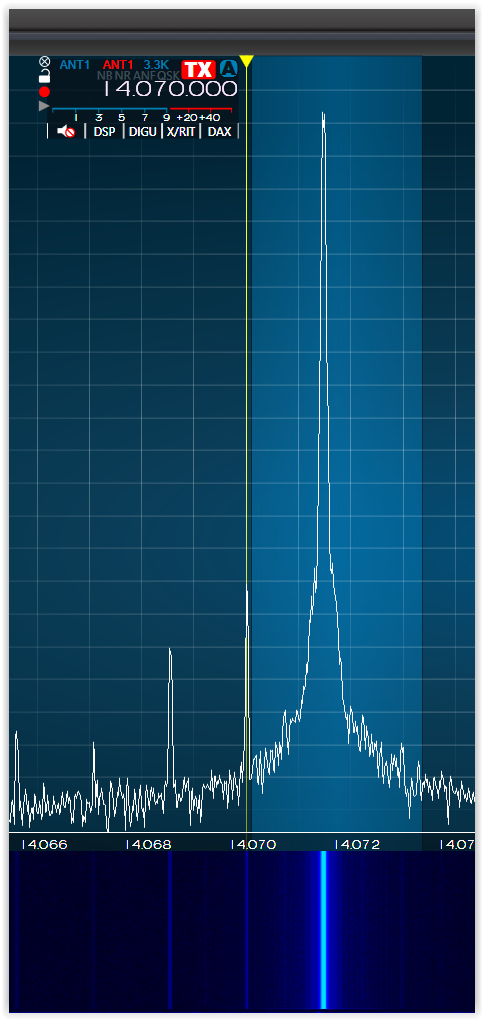Tonight I want to describe the great ease the 6300 makes for working CW split pileups.
My station is not automated and my antennas are resonant on some bands (160, 80, 40, 20). These represent separate antennas switched by a Ameritron RCS-4 antenna switch. The other bands are and not resonant, 60, 30, 17, 15, 12, 10, and 6 but they are close. On these bands I load up either my 80M vertical or my 43ft vertical, My worst SWR is on 60M with 2.86:1 loading up my 80M vertical and second is 17M with 2.36:1. The rest are all under 2:1. I am using an
Ameritron ALS-1300 solid state amp:
Mine is serial # 00009 and it's been very reliable. I keep the power right at 1100W or so even though it will do more on most bands. I did have a power supply go out which required repair but given its age I can't complain. It cost me much less than a pair of 3-500's to repair. I really love this amp. It is virtually instant on, makes little heat when not transmitting, there is nothing to tune, and there is no grid current fault to worry about. I do have a 3 x 3cx800 amp and a 3 x 3cx400 amp and though they make quite a bit more power they are nowhere near as convenient. It is what it is. I can hit the band see DX I want to work, hit the power switch, hit the operate switch, and have 1200W on the wire in less than 4 seconds.
Next in line is a
MFJ-998 tuner. MFJ has a rap but sometimes I'm not sure why. I've been using this tuner to tune my non resonant antennas for several years. It works flawlessly for me. On non-resonant bands I can merely hit the tune button on the 6300 and a remembered tuning setting clicks in. In less than a second I'm transmitting into what looks like a resonant antenna.
I can choose from 2 different antennas at a button press and it has a circuit which automatically defeats the amplifier keying line. I find it to be very well mannered and predictable in how it works, but then I do not ask it to tune 5 ft pieces of zip cord on 160M. It's well mannered because my antennas are pretty reasonable. It handles the power I run fine. I click tune, the tuner goes click click and I'm ready to go.
I monitor my power with the
LP-100 power meter by N8LP. I was an early adopter of this device also with SR# 0045. I actually liked it so much I bought another.
This meter is unique in that it actually measures RF and detects that on a analogue to digital converter (AKA SDR) and this allows you to understand both magnitude and phase angle of your signal. It is very accurate over the course if its range (from mw to KW) and can out put data into your computer over a serial cable. Here is a shot of DDUTIL reading my transmitted signal on 17M. 17W from the 6300 gets me 222W (11dB) out of the amp and you can see my SWR is 2.36:1
This meter has a program that allows you to plot SWR vs Freq etc. It's basically a transmitting VNA. I have also used it as a precision field strength meter, useful for beam patterns etc.
Tonight I flipped on the radio and loaded up my usual DXing programs, SSDR, DDUTIL, SDRmemory6k, SDR-Bridge with 2 CW skimmers.
The upper panadapter goes with the right skimmer. TI2/N3KS was running a pileup on 18.0755 up 1 +/- some more
It was so good to see a legit pileup. All I've seen lately are those always present W1AW/whatever shindigs. I hit tune on the 6300 and the SWR on the MFJ-998 dropped 1:1. I hit Power on the ALS-1300 with one hand and simultaneously switched the band switch to 17M with the other. As my hand came off the band switch I hit Operate and my radio was locked and loaded.
I clicked the right skimmer which brought me up on TI5/N3KS 's freq in the receiver (note the green arrow at UA3TCJ) He just finished with him.
I heard his responding station giving him 599 in my headphones so I knew I was on freq. with my transmitter. I sent W9OY and he responded immediately and we exchanged 599's
I put him in the log:
and that was that! Less than a minute from hitting the band to logging the QSO. I love DXing with this radio. My habit is to come on a band and first check all the last half dozen cluster spots by clicking them. If I hear nothing interesting, I start then at the bottom of the band and start clicking signals trying to identify them. The advantage of the 6300 is even if I pass a freq and something comes on after I pass it is still evident on the panadapter and waterfall and I just recycle back to see what's up. I can memorize my VFO freq in DDUTIL
See a new station pop up
determine who he is and work him if I need him. If not I just hit the load button on DDUTIL and I'm back to where I started diligently tuning up the band.
73 W9OY
























































